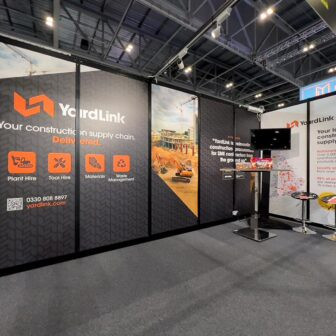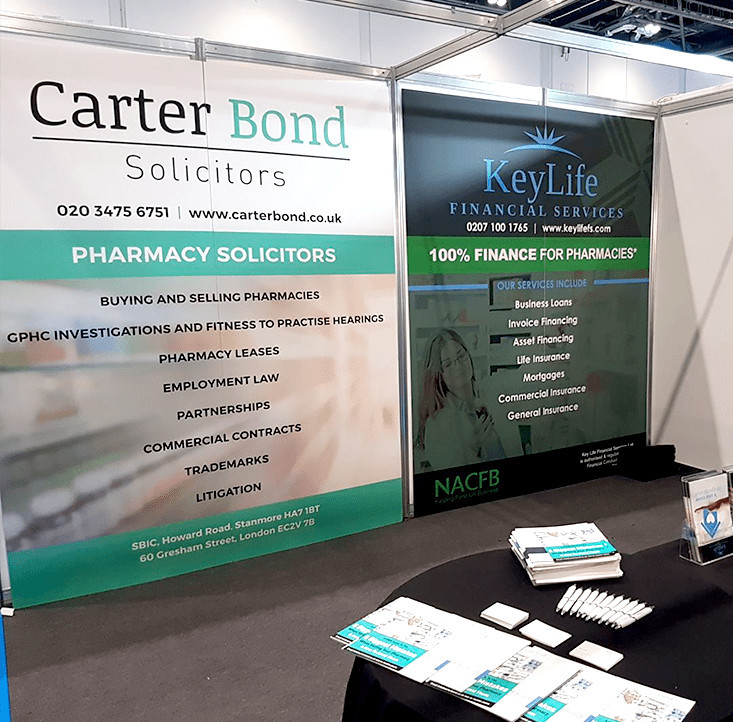views
Best Inks for Exhibition Materials & Print Projects
In the world of print, choosing the right ink is just as important as selecting the right material. Whether you're creating a large banner, a brochure, or a set of shell scheme panels for an exhibition, the type of ink you use can affect everything from colour vibrancy to how long the print lasts.
This blog explores the different ink types available and how to match them with your chosen materials. Whether you're new to print or have years of experience, understanding ink compatibility can help you make smarter, more effective decisions.
Understanding the Basics of Ink Formulas
Inks might look the same on the surface, but they’re made up of different ingredients. Most inks contain pigments or dyes (to provide colour), a carrier (which could be water, oil, or solvent), and other additives that influence drying time, finish, and resistance.
The way ink interacts with a surface (or "substrate") depends on how it's made. Some inks sit on top of the material, while others soak in. This is why one type of ink might look fantastic on vinyl but fade or smudge on paper.

Types of Inks and Their Ideal Use Cases
Each ink type has its strengths and limitations. Below is a breakdown of the most commonly used inks and the materials they work best with.
Solvent-Based Inks
Solvent inks are popular for outdoor printing because they’re tough and weather-resistant. They’re great for vinyl signs, outdoor banners, vehicle graphics, and similar materials.
- Best for: Vinyl, PVC, outdoor signs
- Pros: Water-resistant, fade-resistant, long-lasting
- Cons: Strong odour, requires ventilation, not very eco-friendly
- Use tip: Ideal for large outdoor displays or long-term signage
UV-Curable Inks
UV inks dry instantly under UV light. This makes them perfect for exhibition printing on rigid materials like Foamex, acrylic, wood, or even glass. The quick curing process helps keep colours sharp and prevents smudging.
- Best for: Foamex boards, glass, acrylic, metal
- Pros: Fast drying, vibrant colours, suitable for various surfaces
- Cons: Expensive, needs special equipment
- Use tip: Excellent for high-impact graphics on shell scheme panels
Water-Based Inks
These inks are mainly used for indoor printing and eco-friendly packaging. They are commonly found in desktop inkjet printers and short-run print jobs like posters or cardboard displays.
- Best for: Paper, cardboard, fabric
- Pros: Low odour, safe for indoor use, better for the environment
- Cons: Not waterproof, limited material compatibility
- Use tip: Use for indoor campaigns or recyclable packaging
Latex Inks
Latex inks combine the best of both solvent and water-based options. They're flexible, durable, and relatively safer for the environment. These inks are often used for wall graphics, stickers, and soft signage.
- Best for: Fabric, vinyl, wallpaper
- Pros: Flexible, water-resistant, low odour
- Cons: Requires latex-compatible printers
- Use tip: Suitable for indoor and outdoor exhibition graphics
Dye Sublimation Inks
These inks are used for printing on polyester or polymer-coated items. The dye turns into gas during heat transfer, bonding deeply with the fabric. This results in long-lasting and washable prints.
- Best for: Polyester fabrics, promotional items, clothing
- Pros: Washable, vibrant colours, excellent for textiles
- Cons: Only compatible with polyester
- Use tip: Ideal for branded flags, fabric displays, and soft furnishings
Matching Ink with Your Printing Material
Choosing the wrong ink for your material can lead to dull colours, peeling prints, or even damage to your printer. Here's a quick-reference guide to help you match ink types with materials:
|
Material |
Recommended Ink |
|
Foamex |
UV-curable ink |
|
Vinyl |
Solvent or Latex |
|
Paper/Cardboard |
Water-based |
|
Fabric (Polyester) |
Dye Sublimation |
|
Acrylic/Glass |
UV-curable ink |
|
UV-curable or Latex |
If you're working on a project that uses more than one type of material, always do a small test print first or consult your print provider. This helps prevent costly reprints and ensures consistent quality across all items.
Environmental & Safety Considerations
Not all inks are created equal when it comes to safety and sustainability. Some solvent-based inks release volatile organic compounds (VOCs), which can be harmful to the environment and to people working in enclosed spaces.
If you’re printing for indoor use or in public environments (such as exhibitions or retail spaces), water-based or latex inks are safer choices. These are also better for companies looking to reduce their carbon footprint.
Look out for certification labels like GREENGUARD, which show that the ink meets environmental safety standards.
Choosing the Right Ink for Your Project
When deciding which ink to use, consider the following:
- Surface Type: What material are you printing on?
- Durability: Will the print be indoors or outdoors? Does it need to last for months or just a few days?
- Visual Impact: Do you need bold, high-resolution colours?
- Environment: Are there restrictions on odours or chemical exposure?
- Budget: Some inks and equipment are more costly than others, but may save money in the long term.
If you’re unsure, it’s best to speak to a professional printer. They can help you select an ink that matches your goals while staying within budget.

Conclusion
In the world of professional printing, there’s no such thing as one-size-fits-all when it comes to ink. The best results come from matching the right ink with the right material, especially when it comes to exhibition printing and custom shell scheme panels. Whether you need outdoor durability or indoor elegance, understanding the characteristics of different inks helps you avoid mistakes and achieve better, longer-lasting results.
If you're looking for expert advice and reliable results, the Board Printing Company can help guide your project from start to finish with the ideal ink and material combination.



Comments
0 comment